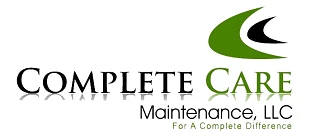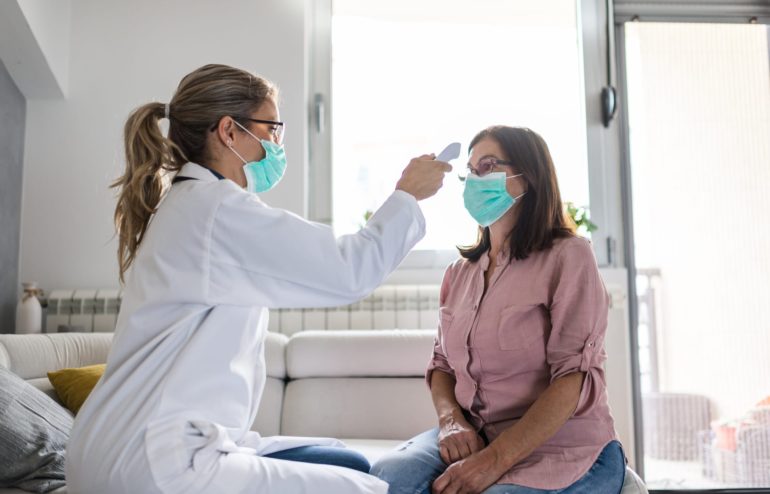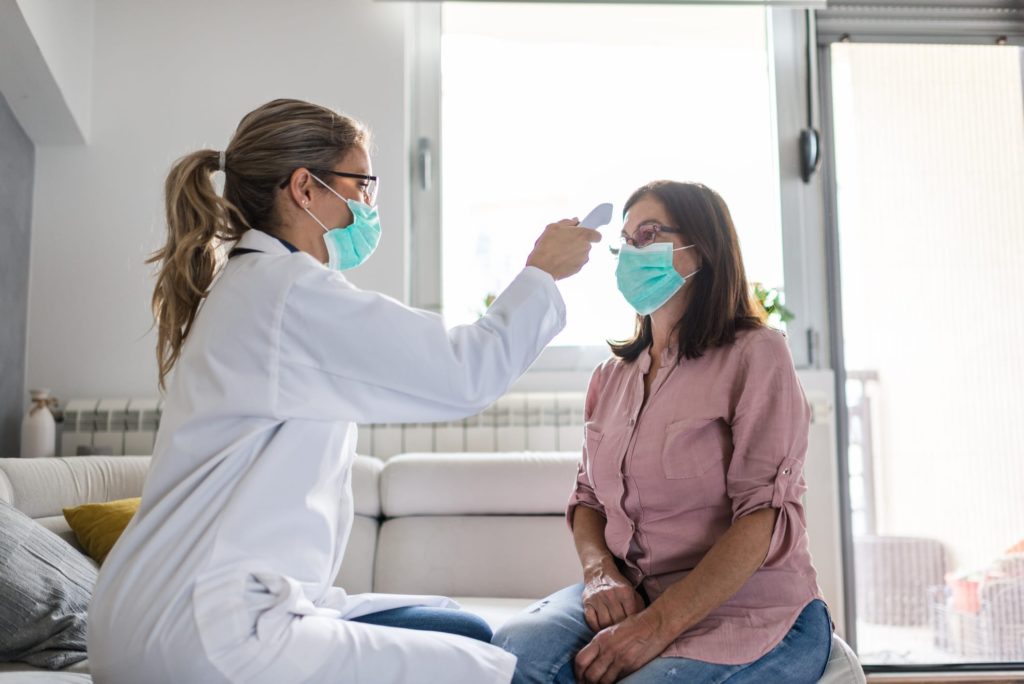Urgent Care Cleaning 5 Best Practices
Urgent Care clinics require constant cleaning and disinfecting under the best of circumstances. With flu season in full swing and a lingering pandemic, the importance of urgent care cleaning and disinfecting protocols can not be overstated. Whether you hire a professional cleaning company to manage these tasks or train in-house staff to address your clinic’s cleaning needs, there are some very basic protocols that need to be followed.
1) Prioritize High-Touch Surfaces
High-touch surfaces are those that tend to come into contact with patients and staff on a regular basis. Door handles, light switches, bed rails, telephones, and shared office equipment are just some examples of high-touch surfaces. These surfaces should be cleaned and disinfected multiple times per day to help reduce the spread of viruses and bacteria.
The first step is to thoroughly clean the surface with the appropriate cleaning agent and allow it to dry. Step two is to use a CDC-recommended disinfectant to kill any bacteria that are residing on the surface. Be certain to allow for the appropriate dwell time as per the manufactures recommendations.
2) Develop A Cleaning Strategy
To properly clean and disinfect your urgent care facility it is important to develop a strategy. Once developed, your cleaning strategy should be used as the defacto procedure by which every facility cleaning session is completed. Your cleaning strategy should prioritize when and where cleaning should occur and in what order.
Urgent care facilities typically have a variety of rooms that can be classified based on their utility and general ‘dirtiness’. A doctor’s personal office space is likely not as dirty as an examination room or the facility’s restroom. When developing your cleaning strategy it is wise to address the least dirty areas first and move on toward progressively dirtier areas of the clinic. Prioritizing cleaning in this way can help reduce the spread of germs and bacteria.
3) Use Proper Chemicals And Equipment
Knowing which chemicals to use on which surfaces is extremely important as some disinfectants are more effective on certain surface types and some surfaces can be damaged by too harsh a cleaning agent. In addition, some chemicals can cause respiratory distress in some individuals. Know your chemicals and how and where to use them.
Utilizing the right equipment is nearly as important and can reduce effort and promote more effective cleaning and disinfecting. For instance, microfiber mops and cleaning cloths can help reduce bacteria when compared to other options. Take the time to learn about the best equipment and cleaning supplies for your clinic’s particular needs.
4) Reduce Or Eliminate Cross-Contamination
As an urgent care facility manager, you are acutely aware of the dangers of cross-contamination. One of the most important considerations for any cleaning protocol is how best to limit or eliminate the potential for cross-contamination. Cleaning cloths and mops used in one area should always be decommissioned prior to moving on to another area of the facility. They should be placed in a sealed plastic bag for laundering. When preparing to clean the next area on your list always start with fresh cleaning cloths and mop heads.
5) Reduce Airborne Contaminants
Your urgent care cleaning strategy should address airborne contaminants and utilizing the proper equipment and procedures is the key. For instance, using HEPA filter vacuums and microfiber cleaning cloths can significantly reduce airborne particulate and bacteria. Protocols should be put in place for waste disposal, proper bedding and laundry procedures., and hazardous waste disposal.
Want Help Setting Up Your Urgent Care Cleaning Program?
Complete Care Maintenance can help you to set up an effective cleaning and disinfection protocol for your urgent care facility. Even better, we can provide urgent care cleaning services for you saving you time and money while giving you, your staff, and your patients greater peace of mind.




